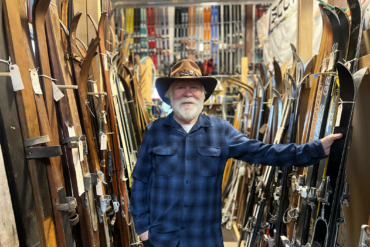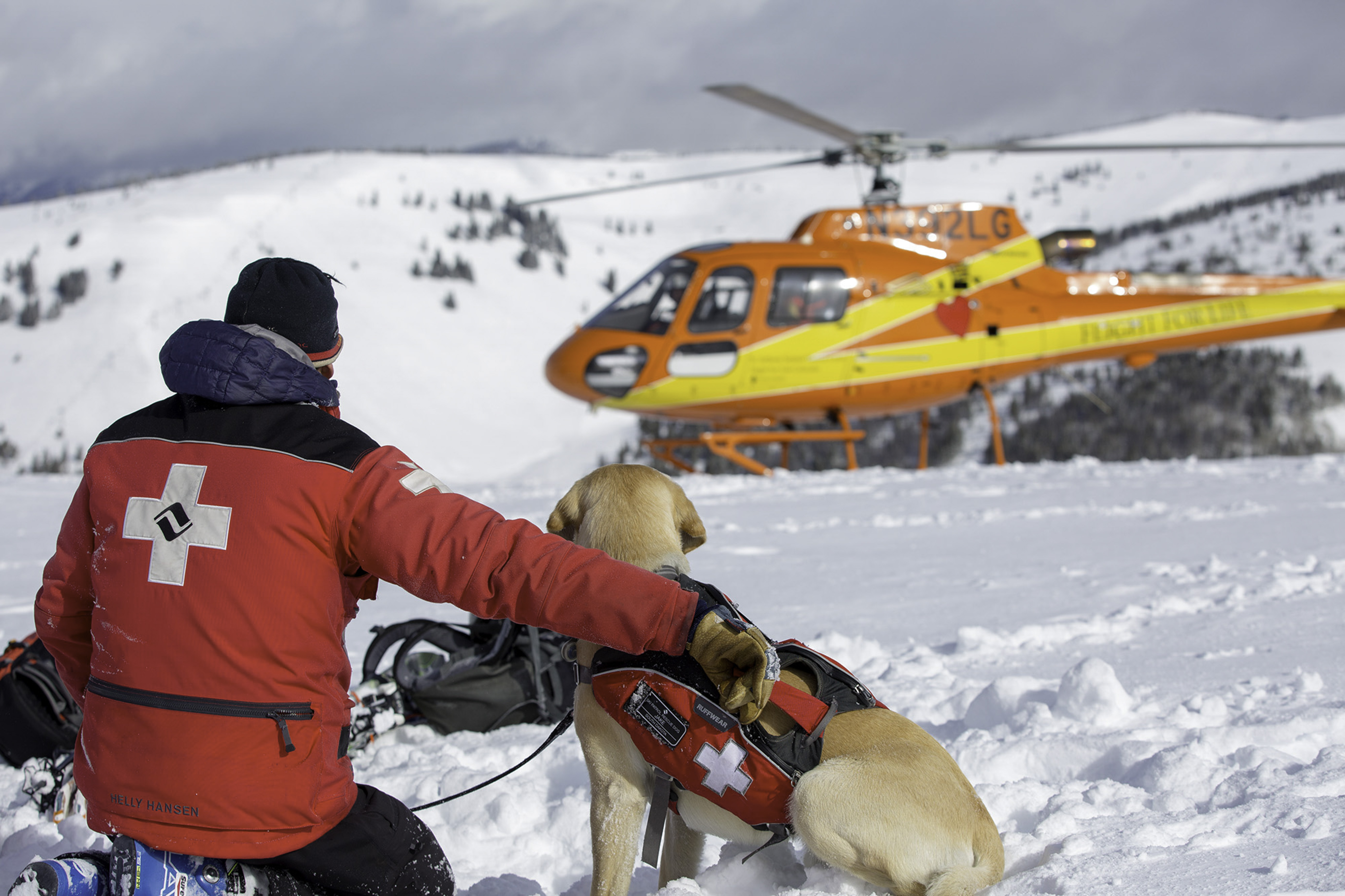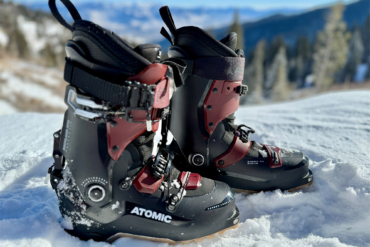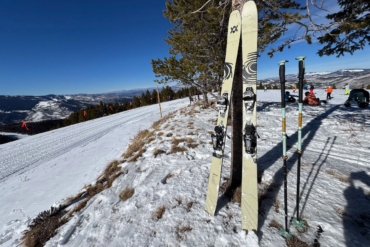By SEAN MCCOY
Our reporter spent three days at the SIA Snow Show in Denver this past weekend, a trade event where hundreds of companies exhibit new goods. Here is our second report (see part I here) from the show, a few items that caught this “snow junkie’s” eye.
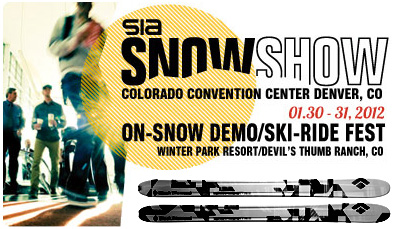
Split-Board Alternative — Splitboards were everywhere at SIA this year. But one company is bucking the trend with a foldable “climbing ski” that straps onto snowboard boots. MTN Approach skis are made for backcountry snowboarders who don’t want to ride a splitboard. The skis have climbing skin material permanently affixed to the base. They fold at two points, making them just 18.5 inches long when stowed away. Sold as a kit, the MTN Approach package includes the skis (with climbing skin base), backpack, and bindings that adapt to fit on snowboarding boots. Unfolded, the skis are 148 centimeters long and fat enough to support a boarder in deep snow. The system costs $800, so it’s a significant investment, but it offers an alternative for the serious backcountry boarder who wants to ride a traditional rig and not “split it” on the way up.
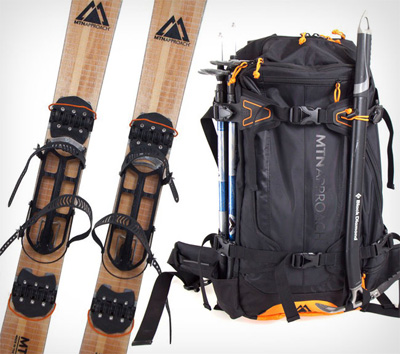
A Different Kind of Wax-less Ski— Anyone who has spent time on Nordic skis knows that waxing is part art, part science, and part luck. Get it wrong and a pleasant afternoon on the snow becomes a desperate thrash very quickly. Wax-less skis have been around for decades and most use some variation of a fish-scale pattern to transfer the power of a kick into the snow while allowing for glide with camber. The Atomic SkinTec is a departure from the fish-scales pattern. The skis come with two interchangeable inserts (with a mohair “skin” material) that slip into the kick zone of the ski.
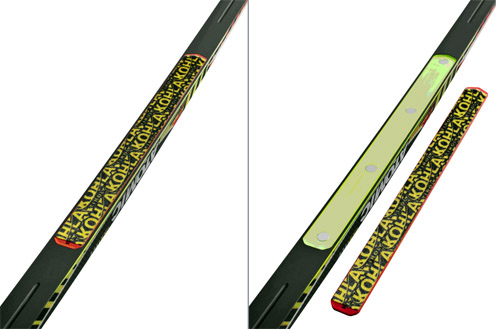
The skins provide better kick and glide than traditional fish-scales, said Rick Halling, a product director for Atomic. Halling noted that the skins work under variable conditions, such as those experienced while skiing from sun into shade. The ski is designed with a flex that enhances the skin base and provides better grip and glide characteristics than fish scales, Halling said. While wax bases are still the gold standard for racing in most conditions, the SkinTec skis are a new option for serious Nordic skiers, particularly instructors or those who want to train without the hassle of wax. I hope to get my hands on a pair to test soon. They are among Atomic’s top-of-the-line skis, and they come with a price tag to match, retailing at $479. The ski was released in 2011 but sold out quickly, Halling said. He said the supply will be met more easily in 2012.
Adjust-a-View Goggles — Outside magazine gave these new goggles an award at SIA. What makes ‘em special? The Off-Grid goggles by Scott are touted as the company’s “largest spherical goggle to date” and have adjustment features built in. You can adjust the frame’s curve to better fit your face, including micro-movements millimeter by millimeter with a screwdriver head twisting to make for a perfect fit.
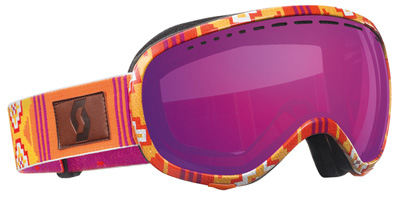
Talk to your buddy, No phone needed — Helmet intercom systems are nothing new, but they are new to the ski industry. Motorcyclists have enjoyed talking to their riding partners for years thanks to products from UClear. At SIA, the company unveiled the Uclear HBC 120 Snow Helmet Communicator for skiers and boarders. Adapted from the motorcycle industry, the intercom mounts inside a ski helmet or onto goggles. It allows people to communicate within a 10-meter range and, because of noise-canceling technology, the company claims it works while you are pointing them downhill on skis. They also work as a blue-tooth device to answer phone calls, stream music or even connect with a walky-talky via an adapter. While a 10-meter range is pretty much shouting distance, the ability to talk on walky-talky mode hands-free and then easily switch to intercom with your buddy in a wind storm does bring to mind many possible applications. I played with the setup for a minute at SIA and it sounded loud and clear.

First Degree Storm Trooper — There was literally a line to see this ski boot at SIA. First Degree, a new boot company closely linked with Icelandic skis, has developed this boot from the insole on up. Designed for in-bounds and sidecountry skiing, the First Degree line of boots use a four-buckle shell with five forward-lean adjustment settings that are advertised to allow a skier to better customize fit and flex. The boots will be available in independent retail outlets for the 2012-2013 season. Two models, the ST1 and ST2, will sell for $599 and $649.
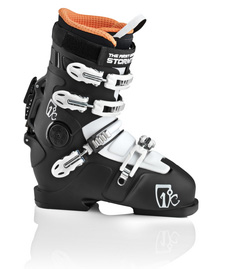
Carbon Mega-Sticks — A wood core reinforced with carbon fiber lightens this year’s Megawatt ski by Black Diamond by about 2 pounds for the pair. That’s significant alone. Called the Carbon Megawatt skis, they weigh under 5 pounds each — light! — but are beefy enough for mission-critical mountain terrain. Big under-ski surface area with 152-125-130 dimensions. Paulownia wood/carbon core. On sale mid-2012 for about $930 msrp.
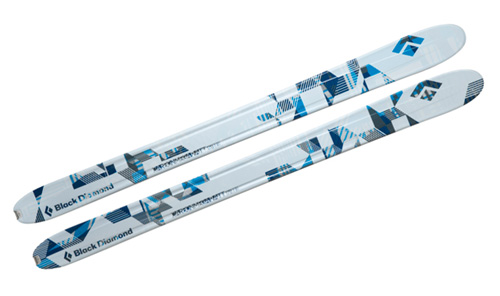
ViseGrip — A couple years ago, a friend of mine slashed his knuckle open while trying to sharpen a snowboard edge. He bled on the garage floor and wasn’t allowed in the house for about a half-hour due to a constant trickle of blood. Harsh! The problem is he was trying to use a ski vise to hold his snowboard, and it didn’t quite work. Some of us ski, some of us ride and some do both, which is why I love the idea behind the Kuu Vise President. The simple vise product attaches to a sawhorse, work bench or table and works with skis or snowboards. I played with one for a while on the floor of the convention center and it seems rugged, easy to use and practical. I haven’t had the chance to put one through the wringer, but it seems like a good idea well executed. Retailing at about $90, it’s not exactly cheap but would work well for the family or group who share varied snow-sport passions.

Save your ACL — Skiing is dangerous but there are ways to reduce the chance for injury. The KneeBinding system appears to be a new one and it has gotten a lot of praise over the last year. The company claims the binding reduces the chance of knee injury by introducing a second point of rotation with an “articulating heel interface point.” This release allows the heel of a ski boot to rotate in just one direction, inward, thus reducing the chance for “phantom foot” ACL injuries, the company cites. According to the company, of the thousands of ACL injuries each year many could be avoided with this system. Bindings start at $399.
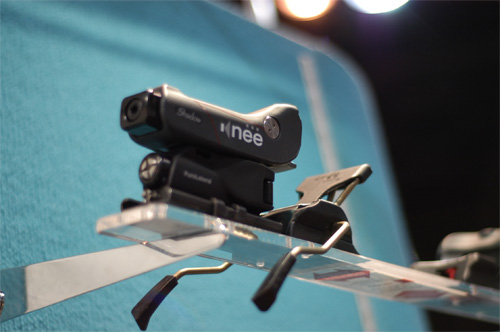
Extreme Cotton — I did a double-take when I saw Polarmax was making base-layer apparel from cotton. Isn’t that the “death fabric” in the outdoors? Speaking with representatives from Polarmax, I was told its shirts have a chemical impregnation treatment that lets fibers dry much faster than normal cotton. The company has a new treatment this year. It is said to dry twice as fast as the TransDry system that was used in 2011. In the hand, the base layers have a soft face and feel simply like a workaday cotton shirt.
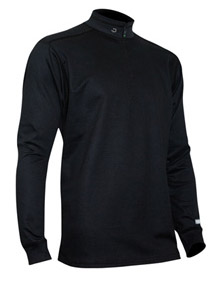
All-in-One Ski Travel Pack — Skis, boots, helmet, poles, gloves and some clothing, all in one place. That was the idea behind the Kulkea Ski Trekker pack. The company’s pack line caught my eye because it solves a simple problem by organizing all the gear needed for a day on the snow. The backpack-styled bags aren’t exactly technical. They wouldn’t be wonderful for backcountry, but will work fine for general ski gear transportation. Constructed from water-resistant nylon, polyester and tarpaulin, the bags appear tough and great for throwing from basement to car to hotel room and back again, keeping everything protected and in one place.
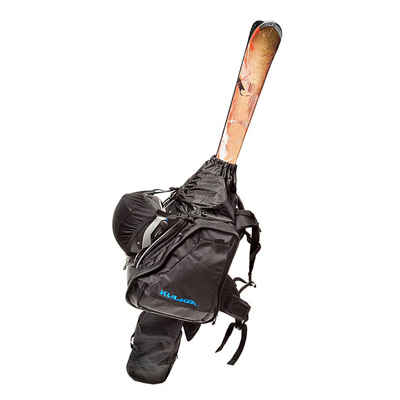
Leg Saver — Though not new, the Strap Pad deserves a revisit. This is a simple device that makes riding a chairlift with a snowboard more comfortable. A stomp-pad with a boot strap in the center, it allows a rider’s free leg to pick up some of the slack while the board hangs below on the lift, balancing the weight between the front and back foot. It also may help beginners maneuver small hills without strapping in. It is pretty benign looking and, if you’re a snowboarder who suffers from knee pain on the chairlift, a simple $22.50 solution.
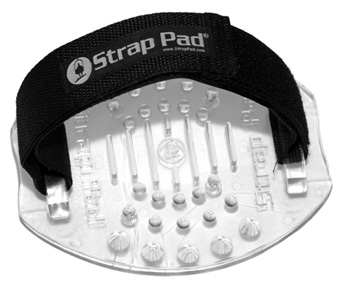
Locator Beacon for Gear — Blowing out of your bindings in deep powder sucks. One minute you’re having the time of your life blasting through the trees, the next you are stabbing around in the snow with a pole, hoping to find a ski that is somewhere within, say, 30 feet but hidden in the white deep. The Ski Retriever is a solution to lost skis, goggles, cell phones or whatever else you may want to locate with electronic aid. Retailing at $159.99, the kit includes a small handheld unit that will easily fit in a pocket and two mini homing tags affix to skis with glue and a small screw. A handheld receiver unit gives feedback with lights and audio cues to aid in finding buried gear. With a range of more than 100 yards, I’d consider getting an extra set of homing tags for my cell phone and, um, my car even when parked at big resorts. Those alpine parking lots can be mighty huge.

—Sean McCoy is a contributing writer for GearJunkie. He is a recent transplant to Denver after a decade living in the Caribbean, where he served as an editor at the Virgin Islands Daily News.


